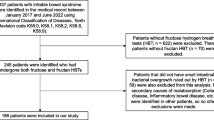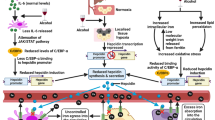Abstract
Background and aims
Systemic caffeine clearance is considered the gold standard for phenotyping cytochrome P450 1A2 in epidemiological studies, and has been recommended for the non-invasive assessment of liver function in chronic liver disease. Our aim was to find a valid, simple and reliable alternative to this method, and therefore focused our attention on the measurement of an unique salivary caffeine concentration, without drug exposure.
Methods
Our evaluation included 36 healthy controls, 47 patients with compensated liver cirrhosis of viral origin, and 48 obese and diabetic patients with cryptogenetic (likely metabolic) cirrhosis. All shared the same caffeine consumption habits (regular daily use of caffeinated beverages, mainly coffee). The total overnight salivary caffeine assessment (TOSCA) was determined by using a single-point concentration of salivary caffeine, after an overnight period of abstinence.
Results
Daily routine caffeine intake of our population was adequate for studying the TOSCA. This single-point concentration correlated well with caffeine clearance, measured by salivary concentrations of caffeine. Mean TOSCA in cirrhotic patients was significantly higher than in controls (p<0.001; sensitivity (%) 84.2 and specificity (%) 97.2; negative likelihood ratio=0.16 and positive likelihood ratio=30.32). A cut-off set at 4.2 μg/ml (sensitivity (%) 95.8 and specificity (%) 68.1; negative likelihood ratio=0.06 and positive likelihood ratio=3.0) successfully differentiated the type of cirrhosis. Rapid (with higher metabolism of caffeine) metabolizers were more frequent in the group of patients with cirrhosis of metabolic origin (70.8%; p<0.0001), and the opposite was true for the group of patients with cirrhosis of viral origin, which comprised many poor metabolizers (85.1%; p<0.001). Serum transforming growth factor-beta 1 concentration, mirroring ongoing fibrosis, ranked high in poor metabolizers. The association between overnight assessment and homeostasis model assessment in rapid metabolizers could result from similar roles for cytochrome P450 1A2 and insulin resistance in determining metabolic liver cirrhosis.
Conclusion
The TOSCA, although differential between the viral and metabolic etiologies, could be considered a good diagnostic use to verify the presence and eventually the type of compensated liver cirrhosis






Similar content being viewed by others
References
Faber MS, Jetter A, Fuhr U (2005) Assessment of CYP1A2 activity in clinical practice: why, how, and when? Basic Clin Pharmacol Toxicol 97:125–134
Nordmark A, Lundgren S, Cnattingius S, Rane A (1999) Dietary caffeine as a probe agent for assessment of cytochrome P4501A2 activity in random urine samples. Br J Clin Pharmacol 47:397–402
Holstege A, Staiger M, Haag K, Gerok W (1989) Correlation of caffeine elimination and Child’s classification in liver cirrhosis. Klin Wochensch 67:6–15
Jost G, Wahlländer A, Von Mandach U, Preisig R (1987) Overnight salivary caffeine clearance: a liver function test suitable for routine use. Hepatology 7:338–344
Lewis FW, Rector WG (1992) Caffeine clearance in cirrhosis: the value of simplified determinations of liver metabolic capacity. J Hepatol 14:157–162
Carrillo JA, Christensen M, Ramos SI, Alm C, Dahl ML, Benitez J et al (2000) Evaluation of caffeine as an in vivo probe for CYP1A2 using measurement in plasma, saliva, and urine. Ther Drug Monit 22:409–417
Wittayalertpanya S, Israsena S, Thamaree S, Tongnopnoua P, Komolmit P (1996) Caffeine clearance by two point analysis: a measure of liver function in chronic liver disease. Tokai J Exp Clin Med 21:195–201
Jover R, Carnicer F, Sanchez-Paya J, Climent E, Sirvent M, Marco JL (1997) Salivary caffeine clearance predicts survival in patients with liver cirrhosis. Am J Gastroen 92:1905–1908
de Leon J, Diaz FJ, Rogers T, Browne D, Dinsmore L, Ghosheh OH, Dwoskin LP, Crooks PA (2003) A pilot study of plasma caffeine concentrations in a US sample of smoker and nonsmoker volunteers. Prog Neuropsychopharmacol Biol Psychiatry 27:165–171
Carbo M, Segura J, De la Torre R, Badenas JM, Cami J (1989) Effect of quinolones on caffeine disposition. Clin Pharmacol Ther 45:234–240
Abernethy DR, Todd EL (1985) Impairment of caffeine clearance by chronic use of low-dose oestrogen-containing oral contraceptives. Eur J Clin Pharmacol 28:425–428
Broughton LJ, Rogers HJ (1981) Decreased systemic clearance of caffeine due to cimetidine. Br J Clin Pharmacol 12:155–159
Ou-Yang DS, Huang SL, Wang W, Xie HG, Xu ZH, Shu Y, Zhou HH (2000) Phenotypic polymorphism and gender-related differences of CYP1A2 activity in a Chinese population. Br J Clin Pharmacol 49:145–151
National Institutes of Health: Third Report of the National Cholesterol Education Program Expert Panel on Detection, Evaluation, and Treatment of High Blood Cholesterol in Adults (Adult Treatment Panel III). Executive Summary. Bethesda, MD, National Institutes of Health, National Heart, Lung and Blood Institute, 2001 (NIH publ. no. 01–3670)
Hayden MR, Tyagi SC (2004) Uric acid: a new look at an old risk marker for cardiovascular disease, metabolic syndrome, and type 2 diabetes mellitus: The urate redox shuttle. Nutr Metab (Lond) 1:10
Jehn M, Clark JM, Guallar E (2004) Serum ferritin and risk of the metabolic syndrome in U.S. adults. Diabetes Care 27:2422–2428
Qureshi M, Khsandwala H, Haq IU, Prasad K (2003) Elevated levels of plasma homocysteine in hypertensive patients with diabetes mellitus. J Cardiovasc Pharmacol Ther 8:261–266
Fiellin DA, Carrington Reid M, O’Connor PG (2000) Screening for alcohol problems in primary care. A systematic review. Arch Intern Med 160:1977–1989
Bunker ML, McWilliams M (1979) Caffeine content of common beverages. J Am Diet Assoc 74:28–32
McCusker RR, Goldberger BA, Cone EJ (2003) Caffeine content of specialty coffees. J Anal Toxicol 27:520–537
Miceli JN, Aravind MK, Ferrell WJ (1984) Analysis of caffeine: comparison of the manual enzyme multiplied immunoassay (EMIT), automated EMIT, and high-performance liquid chromatography procedures. Ther Drug Monit 6:344–347
Bataller R, Paik YH, Lindquist JN, Lemasters JJ, Brenner DA (2004) Hepatitis C virus core and nonstructural proteins induce fibrogenic effects in hepatic stellate cells. Gastroenterology 126:529–540
Rodopoulos N, Wisen O, Norman A (1995) Caffeine metabolism in patients with chronic liver disease. Scand J Clin Lab Invest 55:229–242
Garello E, Battista S, Bar F, Niro GA, Cappello N, Rizzetto M, Molino G (1999) Evaluation of hepatic function in liver cirrhosis: clinical utility of galactose elimination capacity, hepatic clearance of D-sorbitol, and laboratory investigations. Dig Dis Sci 44:782–788
Park GJ, Katelaris PH, Jones DB, Seow F, Le Couteur DG, Ngu MC (2003) Validity of the 13C-caffeine breath test as a noninvasive, quantitative test of liver function. Hepatology 38:1227–1236
Niemela O, Parkkila S, Juvonen RO, Viitala K, Gelboin HV, Pasanen M (2000) Cytochromes P450 2A6, 2E1, and 3A and production of protein-aldehyde adducts in the liver of patients with alcoholic and non-alcoholic liver diseases. J Hepatol 33:893–901
Smith AG, Davies R, Dalton TP, Miller ML, Judah D, Riley J, Gant T, Nebert DW (2003) Intrinsic hepatic phenotype associated with the Cyp1a2 gene as shown by cDNA expression microarray analysis of the knockout mouse. EHP Toxicogenomics 111:45–51
Sreekumar R, Rosado B, Rasmussen D, Charlton M (2003) Hepatic gene expression in histologically progressive nonalcoholic steatohepatitis. Hepatology 38:244–251
Mohamed-Ali V, Pinkney JH, Panahloo A, Cwyfan-Hughes S, Holly JM,Yudkin JS (1999) Insulin-like growth factor binding protein-1 in NIDDM: relationship with the insulin resistance syndrome. Clin Endocrinol 50:221–228
Jurgens G, Lange KH, Reuther LO, Rasmussen BB, Brosen K, Christensen HR (2002) Effect of growth hormone on hepatic cytochrome P450 activity in healthy elderly men. Clin Pharmacol Ther 71:162–168, Mar
Friedman SL (2000) Molecular regulation of hepatic fibrosis, an integrated cellular response to tissue injury. J Biol Chem 275:2247–2250
Peterson TC, Hodgson P, Fernandez-Salguero P, Neumeister M, Gonzalez FJ (2000) Hepatic fibrosis and cytochrome P450: experimental models of fibrosis compared to AHR knockout mice. Hepatol Res 17:112–125
Powell EE, Edwards-Smith CJ, Hay JL, Clouston AD, Crawford DH, Shorthouse C, Purdie DM, Jonsson JR (2000) Host genetic factors influence disease progression in chronic hepatitis C. Hepatology 31:828–833
Taniguchi H, Kato N, Otsuka M, Goto T, Yoshida H, Shiratori Y, Omata M (2004) Hepatitis C virus core protein upregulates transforming growth factor-beta 1 transcription. J Med Virol 72:52–59
Abdel-Razzak Z, Corcos L, Fautrel A, Campion JP (1994) Guillouzo Transforming growth factor-beta 1 down-regulates basal and polycyclic aromatic hydrocarbon-induced cytochromes P-450 1A1 and 1A2 in adult human hepatocytes in primary culture. Mol Pharmacol 46:1100–1110
Sepulveda-Flores RN, Vera-Cabrera L, Flores-Gutierrez JP, Maldonado-Garza H, Salinas-Garza R, Zorrilla-Blanco P, Bosques-Padilla FJ (2002) Obesity-related non-alcoholic steatohepatitis and TGF-beta1 serum levels in relation to morbid obesity. Ann Hepatol 1:36–39
Hasegawa T, Yoneda M, Nakamura K, Makino I, Terano A (2001) Plasma transforming growth factor-beta1 level and efficacy of alpha-tocopherol in patients with non-alcoholic steatohepatitis: a pilot study. Aliment Pharmacol Ther 15:1667–1667
Acknowledgement
We would like to thank Mrs Rosanna Scala for her assistance in editing this manuscript.
Author information
Authors and Affiliations
Corresponding author
Rights and permissions
About this article
Cite this article
Tarantino, G., Conca, P., Capone, D. et al. Reliability of total overnight salivary caffeine assessment (TOSCA) for liver function evaluation in compensated cirrhotic patients. Eur J Clin Pharmacol 62, 605–612 (2006). https://doi.org/10.1007/s00228-006-0146-7
Received:
Accepted:
Published:
Issue Date:
DOI: https://doi.org/10.1007/s00228-006-0146-7




